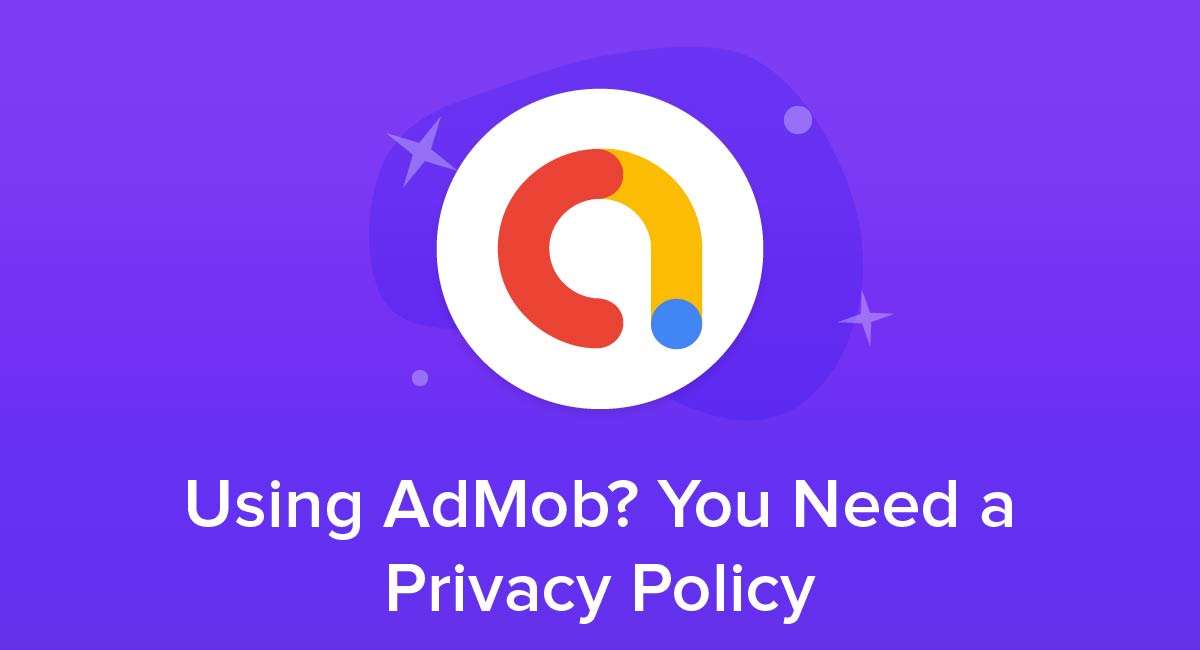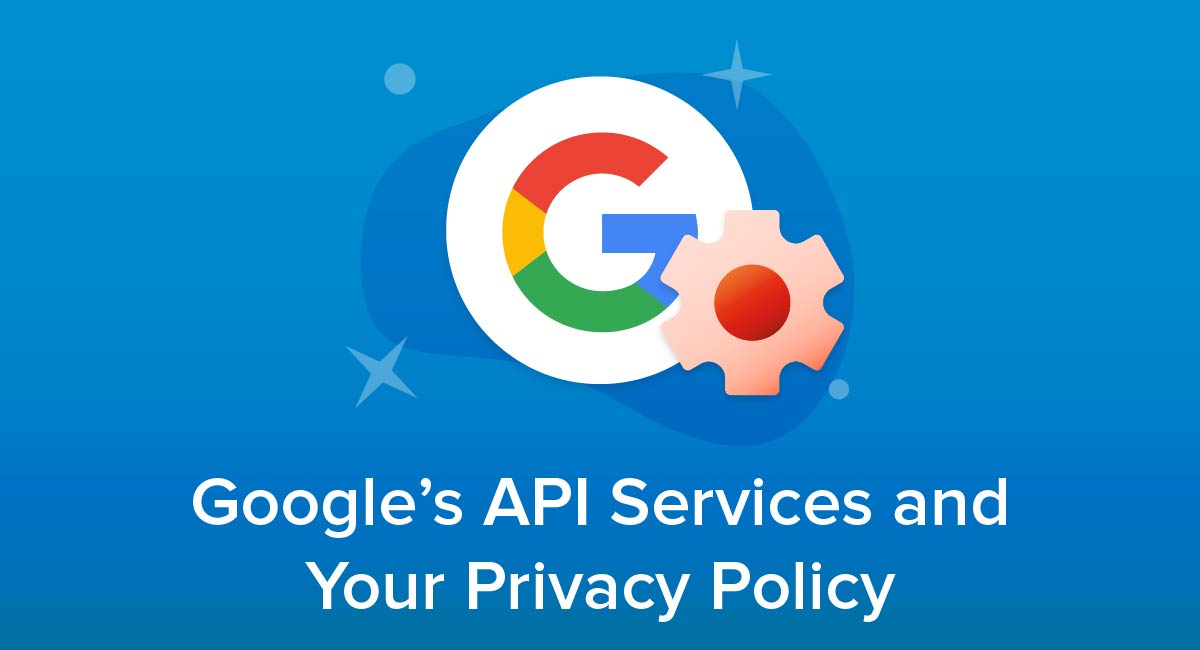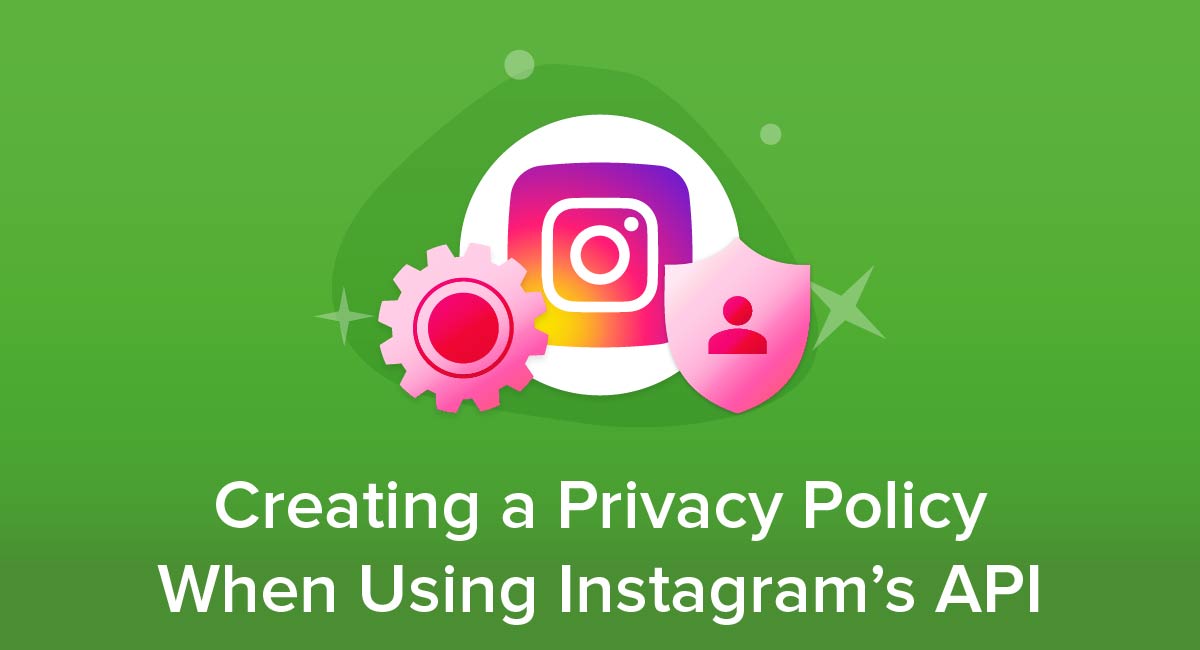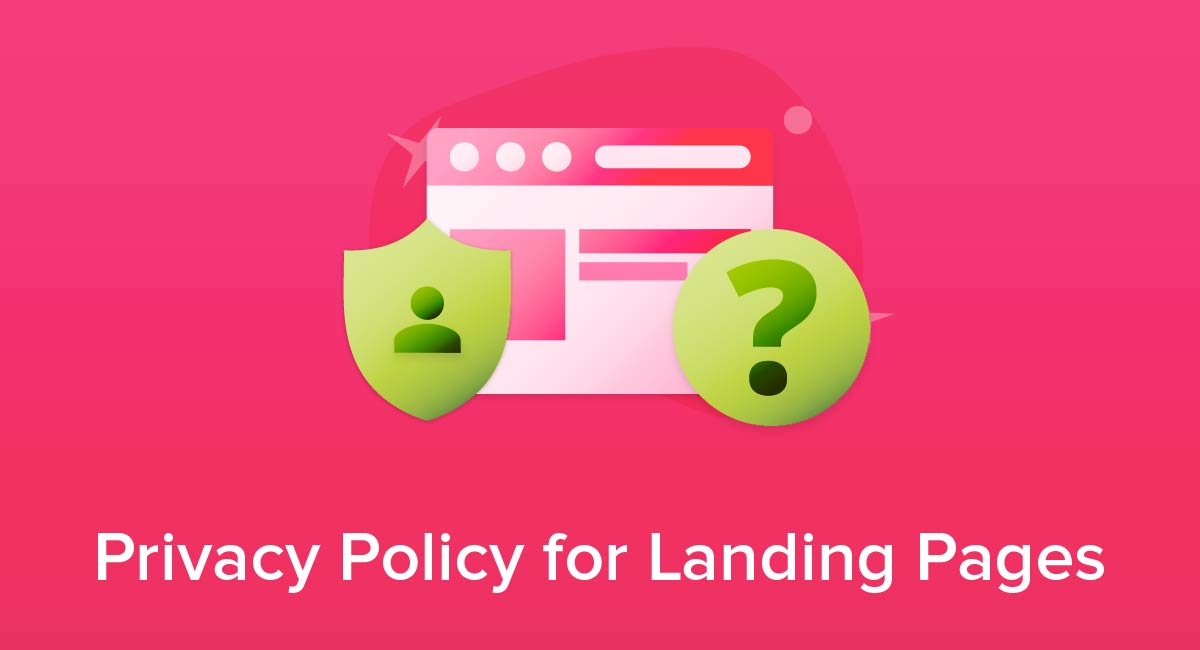
Most companies use a landing page to convert visitors into leads. Like homepages, landing pages are a way for online companies or apps to collect private information of visitors, such as emails.
Landing pages are a great way to sell your product or service on a single page that keeps a visitor's attention and encourages them to join a newsletter or sign up for an account with you. Landing pages are straightforward and have minimal distraction so the user is pointed to the Call of Action the page is designed for.
While these are preferred optimizing tools for your site, if you don't include a link to your Privacy Policy your company may find itself in hot water. Learn below how and why including a link to a Privacy Policy on a landing page is essential for your company and how to avoid running into any legal issues.
What is a Privacy Policy?
A Privacy Policy is a company's disclosure of how, what, and why it collects a consumer's personal information. The policy also includes how the information is stored and protected by the company.
A Privacy Policy (or Privacy Notice) is an agreement between the company and the user. If your company collects personal information, you are required by law to include a Privacy Policy. Users can accept or reject the Privacy Policy based upon the disclosures or change the settings of the collection of their data.
An example of a detailed Privacy Policy is Amazon's Privacy Notice. Its disclosure breaks down the policy into multiple sections explaining how the company collects the data, what it uses the data for, and how the information is stored.
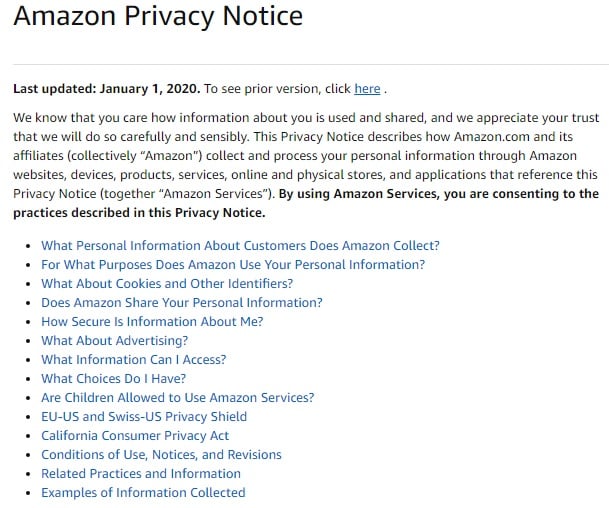
Links to a company's Privacy Policy should be made available to users in a clear and easily accessible manner. They are often included in the footers of the page, sign-up forms, marketing emails, or pop-ups. And they should be included on your landing pages as well.
What is a Landing Page?

A landing page is a separate page created on a website designed to push visitors to take action. Visitors "land" on the page by clicking through a hyperlink on another webpage, an ad on Google, Google Adwords, or a search result.
The landing page is specifically designed for one purpose: to successfully complete a Call to Action (CTA). A CTA is a form or prompt created to induce the visitor to complete a task such as filling out an email form.
The CTA can be either filling out a form for a promotional item or clicking through to the homepage of the website to learn more about the product.
Landing pages are not homepages. Homepages have multiple links, calls to actions, and ads. A landing page has one single directive. It is minimal, very few to no links, and is created to push the visitor to act.
To clarify the difference between the two, check out the homepage and landing page from Mailchimp and Shopify. Mailchimp's homepage includes links the visitor can use to navigate around the site with multiple CTA buttons:
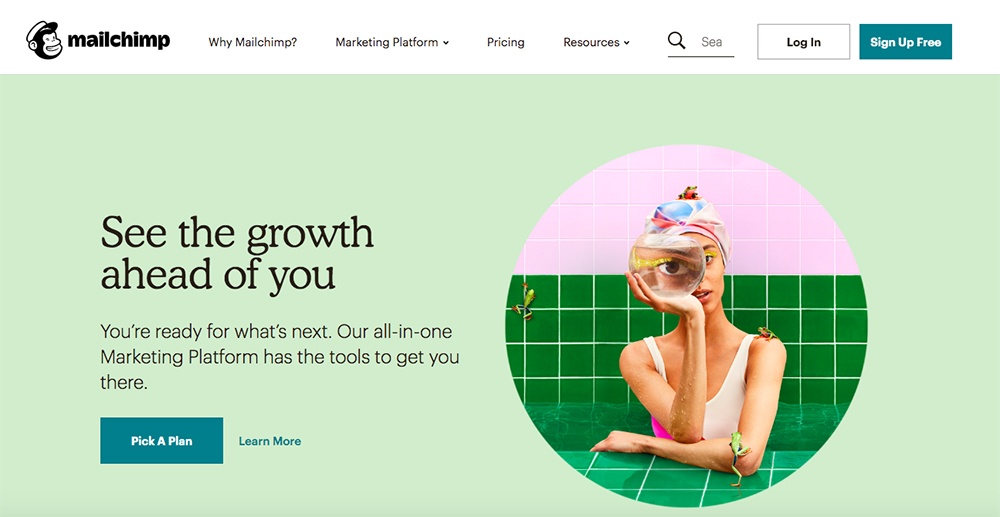
Shopify's landing page, on the other hand, has one CTA. The landing page's only purpose is to collect the user's email address so they can start a free trial:
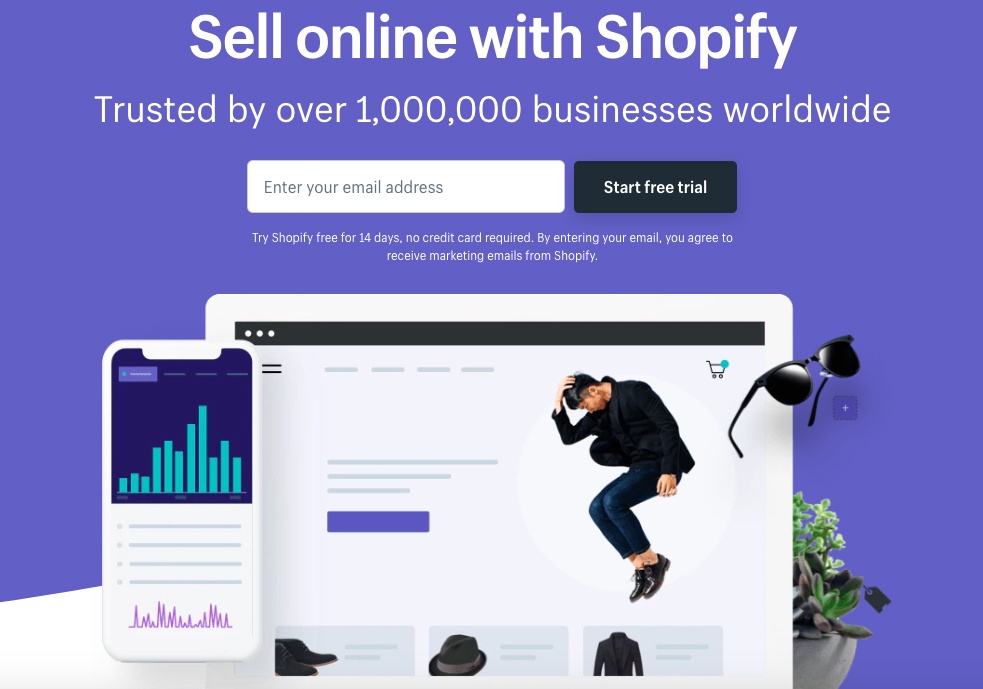
The benefit of using a landing page is your company is able to boil down its main product or service into one simple page. As we all know, audiences have a small attention span. Relating your website to users in an easy and one-stop spot keeps the audience's attention so they don't click away from your site.
A landing page can also help with:
- Promoting discounts or deals
- Acquiring subscribers
- Promoting your products (i.e., ebook)
- Offering free sign-ups or free trials
- Newsletter enrollment
There's no cookie-cutter way to create a landing page. Whatever style and format that works best for your company to convert visitors are the best. However, there are two common types you can use as a base design. They are lead-generation landing pages and click-through landing pages.
Lead-Generation Landing Page
A lead-generation (or opt-in) landing page is structured to gather the information of the visitor to create "leads." Often times this is done through a form to collect the name and email address of the visitor.
A lead-generation landing page can be void of other links and doesn't allow the visitor to leave to another page without submitting the information. A benefit or incentive is typically offered in exchange for the visitor's information such as a free guide or newsletter.
Codecademy's landing page is clear and simple with the CTA being to sign up for free and start learning how to code. The landing page does include some information about what you will learn, but you can't access the lessons further until you provide your email. Note that the Privacy Policy is linked under the "Start coding now" sign-up button:
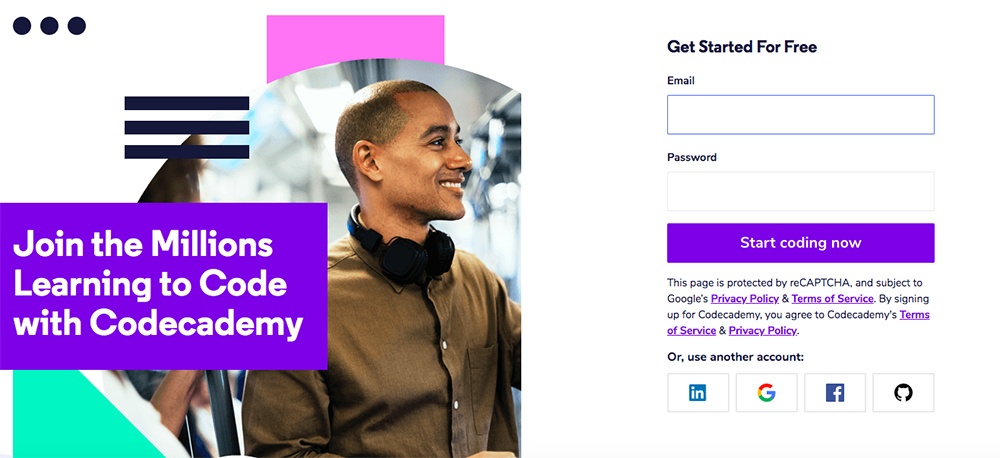
Click-Through Landing Page
A click-through landing page offers just enough information about the incentive to induce the reader to click-through to the website's main page. Readers are able to read the copy on the landing page and click the offered CTA button to learn more.
The click-through landing pages don't include a form. They are designed to pique the visitor's interest to "click-through" to the actual product's page.
Moz's click-through landing page uses words such as "free" to intrigue the visitor. Its landing page has two CTA buttons that allow the visitor to sign up and learn more. Moz's page also draws in the reader with the benefits you would receive from signing up with the company:
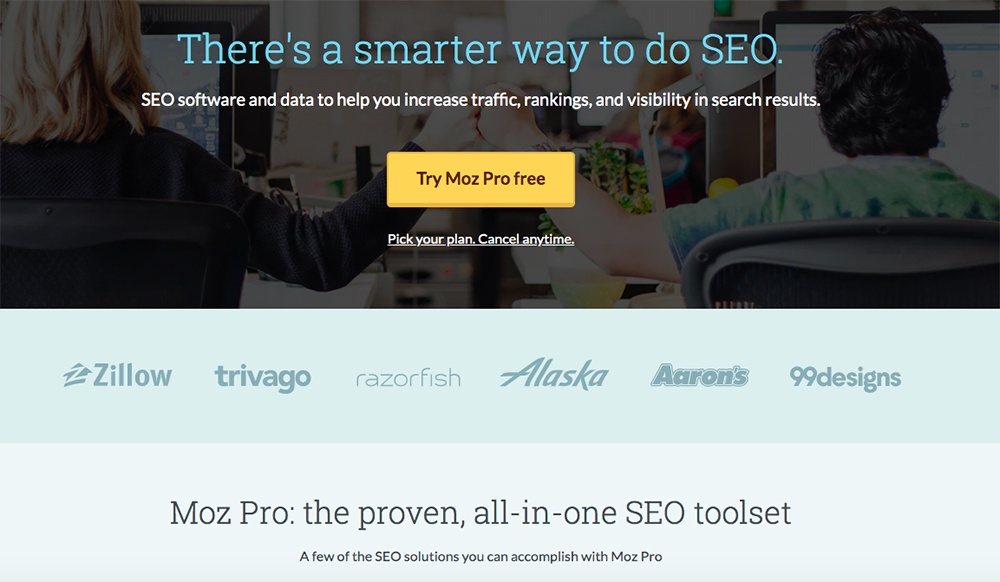
Note that there isn't a Privacy Policy link on this page since no personal information is being collected or requested on it. You can see how that differs from the example above from Codecademy, where an email address is requested directly on the page.
When Would a Landing Page Need a Privacy Policy?

If your website or app uses a landing page that collects the data of a user, you are required by law to have a Privacy Policy and you'll need to link to it on your landing page.
Privacy Policies provide the user with what information your company is collecting and for what reasons. This applies to landing pages in addition to your homepage if you are collecting personal data, such as emails.
There are legal bodies around the world requiring you to include your Privacy Policy. The General Data Protection Regulation (GDPR) of the EU, the California Online Privacy Protection Act (CalOPPA) in the US, the Personal Information Protection and Electronic Documents Act (PIPEDA) of Canada and other laws require companies that fall under their jurisdictions to provide Privacy Policies.
The GDPR requires a Privacy Policy for companies that collect the personal data of EU residents online. Their laws apply to both EU companies and foreign companies that have EU customers.
CalOPPA protects California residents in the same way that the GDPR does for EU citizens. CalOPPA requires a company that collects "personally identifiable information" must also "conspicuously post" a link to the Privacy Policy on the page for users to access. A landing page would fall under this requirement.
PIPEDA was enacted to protect the information of Canadian citizens and requires companies that collect private information to also obtain consent from the user to collect the information. This consent can be through buttons accepting a Privacy Policy on a page or in sign-ups.
Grubhub's landing page is a lead-generating page with a CTA for the reader to provide their street address or zip code. This type of information may not seem as private as a Social Security Number, but is included in the definition of personal information under many laws.
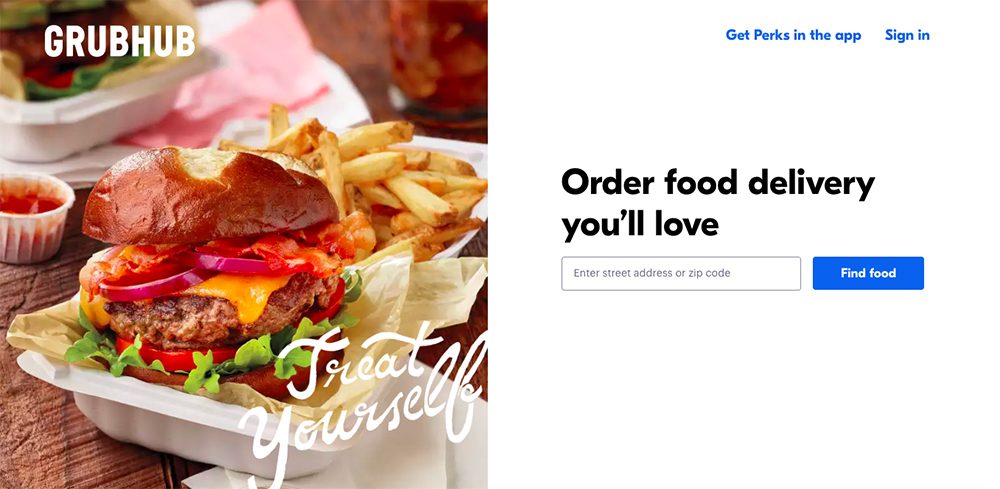
In its Privacy Policy, Grubhub explicitly discloses to its users that it collects private information, including postal addresses:

HubSpot offers visitors an ebook they can sign up for on its landing page. The users must provide their names, email addresses, phone numbers, and business names:
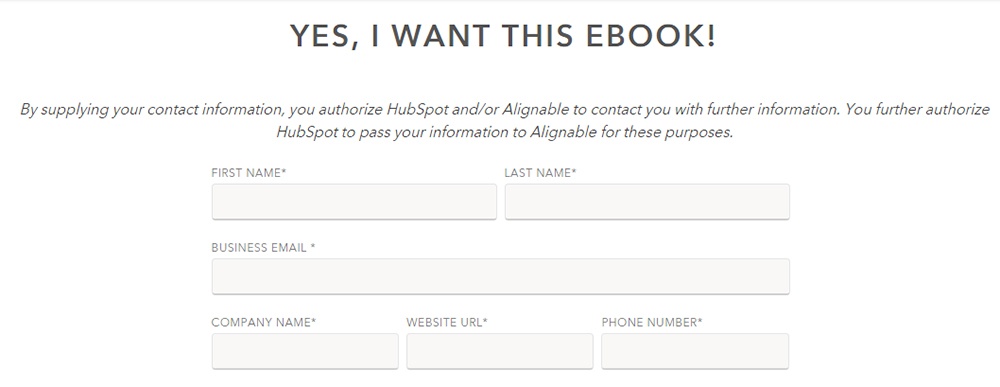
At the bottom of the form, right above the download button, HubSpot links its Privacy Policy:

In its Privacy Policy, HubSpot addresses the personal information it collects, including all of the data collected on the landing page:
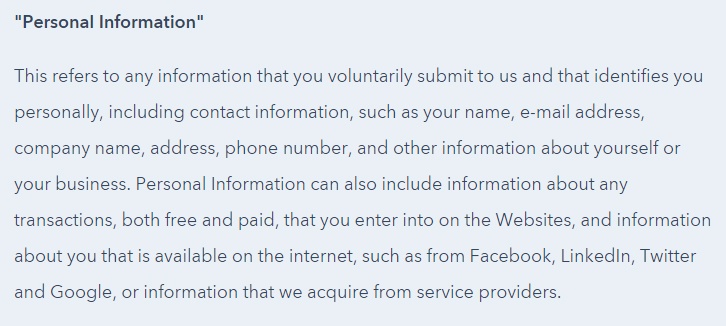
The most common type of personal information that landing pages collect is email addresses. The CTA is often to join a newsletter, sign up for a free giveaway, or begin using the site.
As CalOPPA requires, a Privacy Policy must be easily accessible by the user before they sign up for anything or provide their personal information. Including a link to the Privacy Policy near the sign-up forms or CTA buttons are ideal. However, you can also include them in the footer or sidebar of the page.
The Daily Beast is an example of including a link to your Privacy Policy right next to the point on the landing page that collects the data. There is a box to check to agree to the Privacy Policy and a link the user can read before providing their email to join the newsletter.
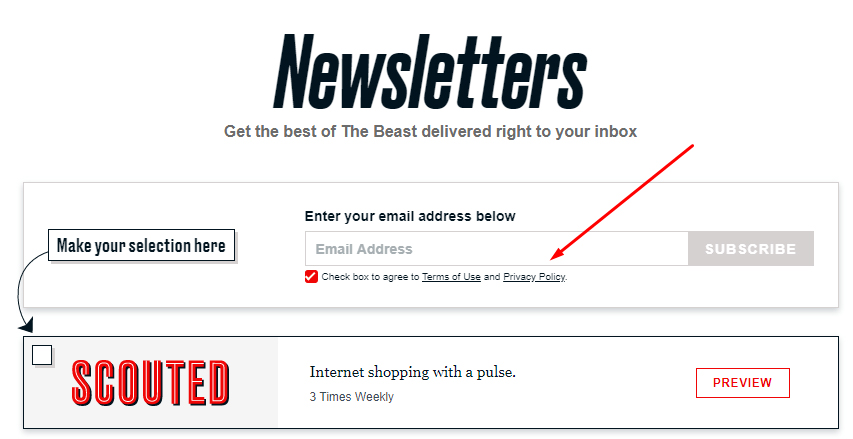
The financial software company Wave includes a link to its Privacy Policy below the email sign up on the landing page. There are no boxes for the user to check to agree to the Privacy Policy, but Wave includes another way you can make the visitor aware of the policy of stating that "signing up" means you agree to the policy.
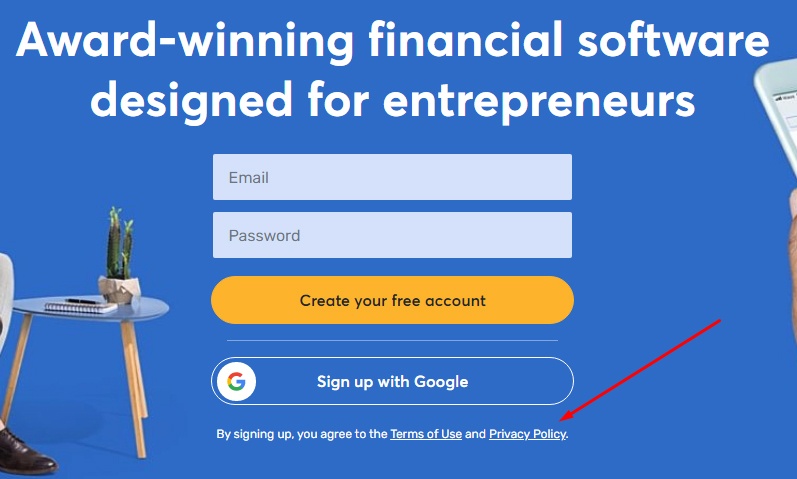
Click-through landing pages are where you will see links to Privacy Policies in the footer or sidebar of the page. Since there isn't a form to fill out, the links aren't included next to the CTA button. These links should still be clear and unambiguous even though they aren't near the CTA.
Lumosity's landing page is an example of a click-through where the Privacy Policy link is in the footer of the page:
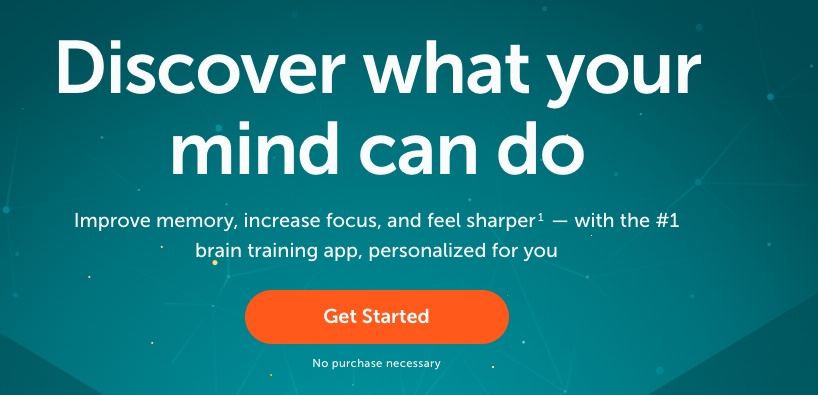
The Privacy Policy link is legible and bolded against the background so visitors can locate the link easily in the footer, which is a common place to look:
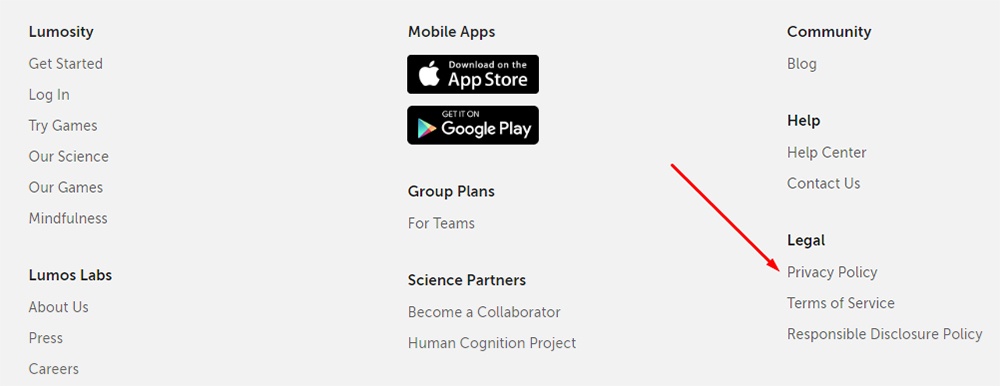
Summary
Landing pages provide a major benefit to businesses when it comes to converting visitors into leads for a company's site. They offer the advantage of minimizing distraction and prompting the visitor to take action.
If a landing page collects personal information, a Privacy Policy link must be made available on the landing page, not just the homepage. Privacy Policies are required by multiple laws if a website collects personal data on any of the pages.
You can easily comply with the law by providing links to the Privacy Policy near the Call to Action forms or buttons on the landing page, or including a link in the footer at minimum. Including the link will protect your company from possible future legal issues and fully disclose your practices to users, which they'll appreciate.
